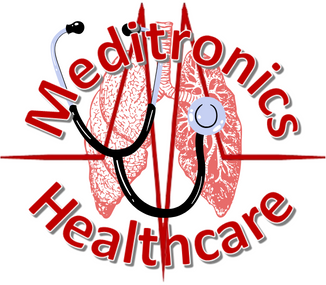What is an Oxygen Concentrator?
An oxygen concentrator is a medical device used to deliver supplemental oxygen to individuals with respiratory conditions that impair their ability to get enough oxygen on their own. Unlike oxygen tanks that provide a finite supply of oxygen, oxygen concentrators extracts oxygen from the surrounding air, concentrating it and delivering it to the patient. This device is commonly used in both clinical and home settings for patients who require long-term oxygen therapy.
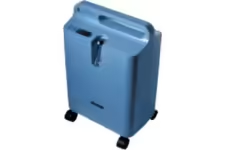
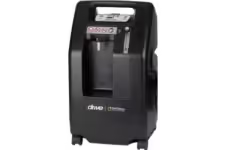
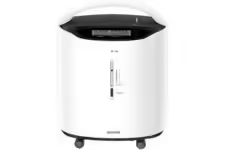

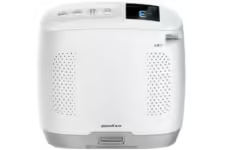
Functions:
How Does an Oxygen Concentrator Work?
An oxygen concentrator operates by:
- Filtering Ambient Air
- Separating Oxygen from other Gases
- Delivering Concentrated Oxygen
- Continuous Operation
Filtering Ambient Air:
The device takes in room air, which is made up of about 21% oxygen, and passes it through a series of filters to remove dust, particles, and other contaminants.
Separating Oxygen from other Gases:
Inside the concentrator, a component called a molecular sieve separates O2 from nitrogen (N2) and other gases. The concentrator uses a process called pressure swing adsorption (PSA) to selectively absorb N2, leaving a higher concentration of O2.
Delivering Concentrated Oxygen:
The purified oxygen (typically 90-95% pure) is delivered to the patient through a nasal cannula or face mask.
Continuous Operation:
As long as the concentrator is powered (typically via electricity or a battery), it continuously supplies oxygen without the need for frequent refills, unlike traditional oxygen tanks.
To Rent or Purchase Oxygen Concentrator
call 6309657730 or 9393450077
When is an Oxygen Concentrator Used?
Oxygen concentrators are prescribed for patients with medical conditions that cause low oxygen levels in the blood, also known as hypoxemia. These conditions includes:
- Chronic Obstructive Pulmonary Disease (COPD): A progressive lung disease that makes it difficult to breathe.
Pulmonary Fibrosis: A condition in which lung tissue becomes damaged and scarred, reducing oxygen absorption.
Pneumonia: A lung infection that can impair oxygen exchange.
- Sleep Apnea (in severe cases): For patients with sleep apnea who require supplemental oxygen during sleep.
Asthma (during exacerbations): Oxygen therapy may be needed during severe asthma attacks when breathing is compromised.
Congestive Heart Failure (CHF): When heart function is diminished, oxygen levels may drop, necessitating oxygen therapy.
COVID-19: In severe cases of COVID-19, where lung function is impaired, oxygen concentrators can provide necessary respiratory support.
Types of Oxygen Concentrators:
- Stationary Oxygen Concentrator
- Portable Oxygen Concentrator
What is the difference between Stationary Oxygen Concentrator and Portable Oxygen Concentrator?
Stationary Oxygen Concentrators: These are larger units designed for home use. They plug into a standard electrical outlet and are typically used by patients who need continuous oxygen therapy throughout the day and night.
Portable Oxygen Concentrators (POCs): These smaller, lightweight units run on rechargeable batteries and are designed for patients who need oxygen while on the go. They allow greater mobility and independence compared to stationary concentrators.
Benefits:
What are the benefits of using a Oxygen Concentrator?
Benefits of using a Oxygen Concentrator are as follows:
Continuous Oxygen Supply: Unlike traditional oxygen tanks, oxygen concentrators don’t require refills. They provide an unlimited supply of oxygen as long as they are powered.
Improved Mobility: Portable oxygen concentrators offer greater freedom for patients who need supplemental oxygen but want to maintain an active lifestyle.
Cost-Effective: Over time, oxygen concentrators can be more affordable than regularly refilling oxygen cylinders, especially for long-term users.
Customizable Oxygen Flow: Concentrators allow the user or caregiver to adjust the flow rate, ensuring the appropriate amount of oxygen is delivered based on the patient’s needs.
Safe and User-Friendly: Oxygen concentrators are generally safer than oxygen tanks, which require careful handling to avoid leaks or explosions. Concentrators are also easy to operate, requiring minimal training for patients or caregivers.
Considerations for using an Oxygen Concentrator:
Electricity Dependency: Most oxygen concentrators require a power source. In areas with frequent power outages, a backup battery or generator may be necessary to ensure uninterrupted oxygen supply.
Noise: While newer models are designed to be quieter, some oxygen concentrators do produce noise while operating, which may be a concern during sleep or in quiet environments.
Limited Oxygen Flow: Portable oxygen concentrators, while convenient, may not deliver as high a flow rate as stationary models. Patients with severe oxygen needs may require a higher-capacity unit.
Maintenance: Oxygen concentrators have filters that need regular cleaning or replacement to ensure optimal performance. Users must follow the manufacturer’s guidelines for maintenance.
Not Suitable for Emergency Situations: For patients who need oxygen therapy only occasionally or during emergencies, oxygen cylinders may be preferred as they do not rely on electricity and provide immediate high-flow oxygen.
How is Oxygen Delivered?
Oxygen concentrators deliver oxygen through:
- Nasal Cannula: A small, flexible tube that sits in the nostrils and delivers oxygen directly to the respiratory system.
- Face Mask: A mask that covers the nose and mouth, used for patients who need higher oxygen flow or find nasal cannulas uncomfortable.
Who Should Not Use an Oxygen Concentrator?
While oxygen concentrators are an effective tool for many patients, they may not be suitable for:
- Patients who need very high oxygen flow rates that exceed the machine’s capabilities (such as those in critical respiratory failure).
- Individuals who experience temporary hypoxemia (e.g., during an asthma attack), where oxygen tanks or other emergency oxygen sources may be more effective.
- Patients who are unable to access a reliable power source or a backup supply.
Conclusion:
Oxygen concentrators are essential medical devices that help patients with respiratory conditions maintain proper oxygen levels in their blood, improving their quality of life and enabling them to live more independently. Whether stationary or portable, these devices provide a reliable and continuous supply of oxygen, reducing the need for frequent trips to refill oxygen tanks and offering long-term support for individuals with chronic respiratory disorders.
